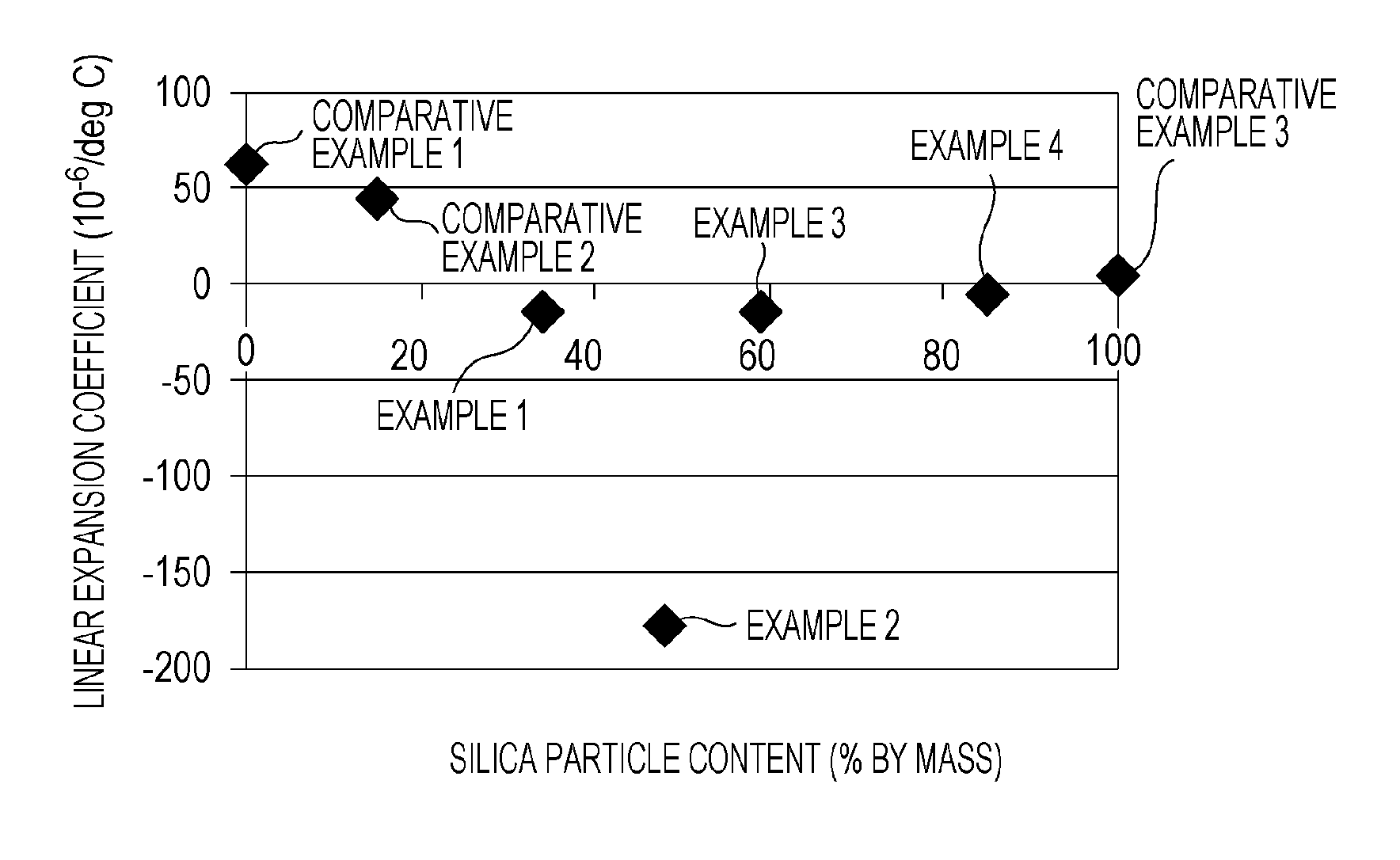Molded article and method of producing the same
a technology of molded articles and molding methods, applied in the field of molded articles, can solve the problems of increasing weight, difficult molding at 400 degrees (celsius) or less, and affecting the optical system, and achieve the effect of low linear expansion coefficien
- Summary
- Abstract
- Description
- Claims
- Application Information
AI Technical Summary
Benefits of technology
Problems solved by technology
Method used
Image
Examples
example 1
[0040]A powder of ZEONEX E48R (product name) manufactured by Zeon Corporation as a cyclic olefin resin and Aerosil RA200H (product name) (number average particle diameter of primary particles: 12 nm) manufactured by Nippon Aerosil Co., Ltd. as silica particles surface-modified with amino functional groups were uniformly mixed and stirred such that the content of the silica particles was 34% by mass.
[0041]NOVEC-1720 (product name) manufactured by Sumitomo 3M Limited serving as a mold-releasing agent was dropped onto the surface, with which materials would be brought into contact, of a 6-mm square mold for press-molding and was well wiped. The mold for press-molding was charged with the mixture of the cyclic olefin resin powder and the silica particle powder and was set to a small heat-pressing machine (AH-2003 (product name), manufactured by AS ONE Corporation) and heated to 200 degrees (Celsius). After temperatures at the upper and lower surfaces of the small heat-pressing machine r...
example 2
[0044]A molded article was produced as in Example 1 except that the concentration of the silica particles was 48% by mass.
example 3
[0045]A molded article was produced as in Example 1 except that Aerosil NA50H (product name) (number average particle diameter of primary particles: 30 nm) manufactured by Nippon Aerosil Co., Ltd. was used as silica particles surface-modified with amino functional groups and that the concentration of the silica particles was 59% by mass.
PUM
| Property | Measurement | Unit |
|---|---|---|
| number average particle diameter | aaaaa | aaaaa |
| number average particle diameter | aaaaa | aaaaa |
| pressure | aaaaa | aaaaa |
Abstract
Description
Claims
Application Information
 Login to View More
Login to View More - R&D
- Intellectual Property
- Life Sciences
- Materials
- Tech Scout
- Unparalleled Data Quality
- Higher Quality Content
- 60% Fewer Hallucinations
Browse by: Latest US Patents, China's latest patents, Technical Efficacy Thesaurus, Application Domain, Technology Topic, Popular Technical Reports.
© 2025 PatSnap. All rights reserved.Legal|Privacy policy|Modern Slavery Act Transparency Statement|Sitemap|About US| Contact US: help@patsnap.com

